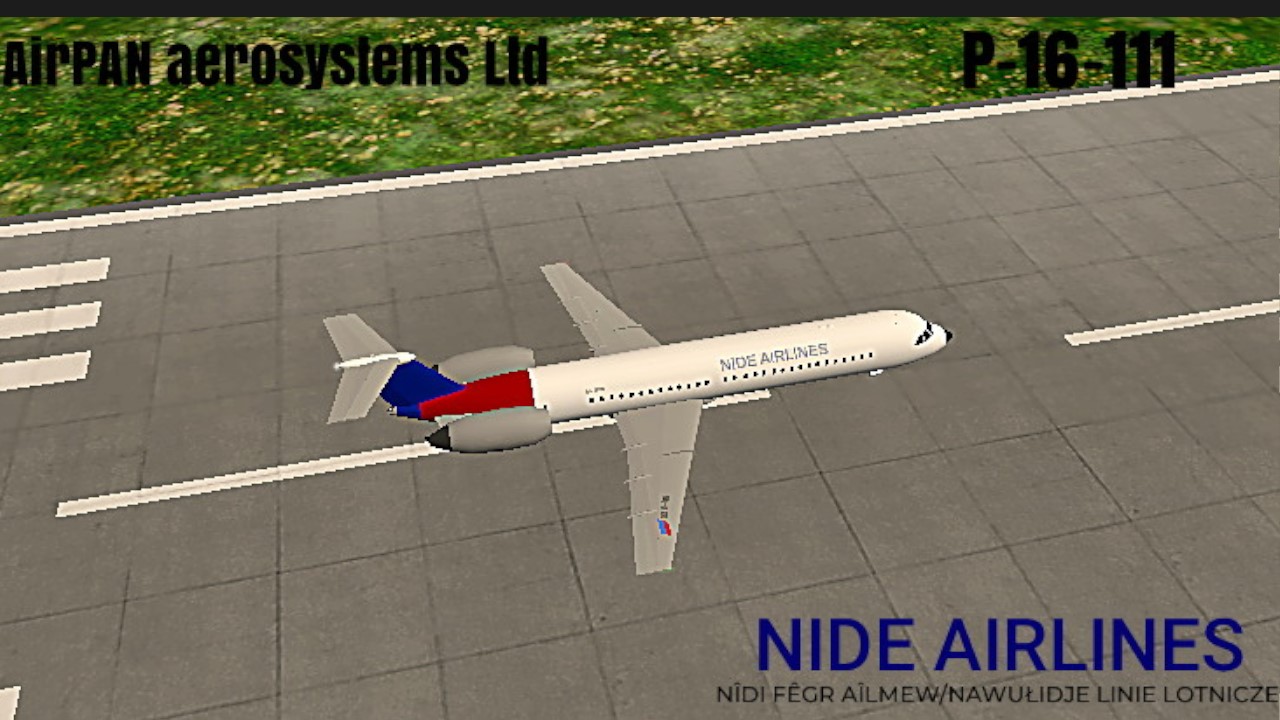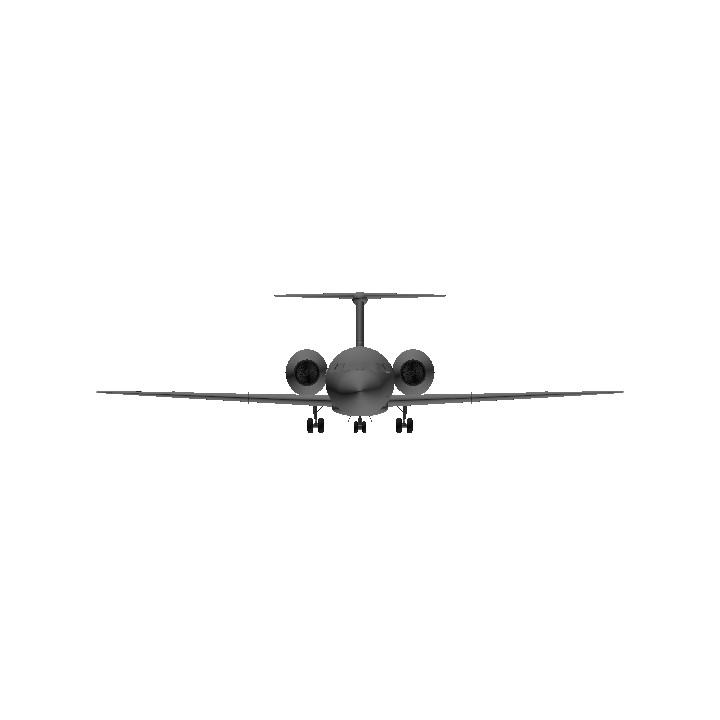Airframe based on Tang0five's BAC 1-11-200 Series
LORE
The development of this plane can be traced back to early 1970s when Atlas Aerosystems Inc.(predecessor of Airpan Inc.) licensed the design of BAC 1-11 to be produced locally in Nide. But the production plan was cancelled because Atlas Aerospace sought to develop the AirPan P-120 widebody airliner to compete with Airbus A300.
Few years later the demand of intercontinental flight between eastern and western Nide was increasing. Nide Airlines fleets of Airpan(Atlas) P-12 having too small capacity to handle the need of flights (P-12 has 96 seats). Nide Airlines CEO at that time, Robert Hudson was looking for a solution to fulfill the demand. He then turned on to AirPan to make a 737-like plane based of their P-12. After some reconsideration, they decided to use the abandoned BAC 1-11 design that will be produced in Nide but cancelled.
Then they ended with P-16-111. It has its first flight in July 1989. The plane was a great improvement over its original design including lengthened fuselage, fly-by-wire controls, and new FanJet 198F high-bypass turbofan engine specifically made for this plane. The plane was meeting the requirements of Nide Airlines and then Nide Airlines ordered 40 units
(insert picturehere)
But unfortunately this aircraft's plans to enter service in 1990 were hindered by an incident. On September 15, 1989 the third prototype (ND-XCF) crashed shortly after takeoff from Airpan Airport/Johnson Air Force Base due to engine problems, killing all five flight crew on board. After the accident, the entire Airpan P-16-111 test fleet was temporarily grounded until the accident investigation was completed. The FanJet 198F engine development was also temporarily stopped. The airworthiness certification process for this aircraft was resumed in April 1990, after it was discovered that the accident was caused by a design flaw in the aircraft's engine and engine replacement was carried out on the remaining test fleet to ensure that the accident would not happen again
The aircraft received a certificate of airworthiness from the Nidian Aviation Safety Committee (NASC) in June 1993, and entered service with Nide Airlines in November
The production was temporarily stopped due to 1997-1998 Nidian economic crisis. The production continued in mid-2001. Along with that the Mk200 model was introduced which includes new engine(FanJet 198D-2) and strengthened structures. This model does not sold well in civil markets and instead found its success in military and because of that the designation of P-16-111 Mk200 was changed to NC-16-111 in 2008. The FanJet 198D-2 was fitted on the original model produced from 2004 onwards and also avaliable as retrofit for earlier airframes
The production of civil P-16-111 models was ceased in 2022 after the demand was reduced due to COVID-19 pandemic. The last civil P-16-111 produced(ND-AXT) rolled out from Airpan Jacksonville-Pierre plant on September 2022 and delivered to Nide Airlines on the next month.
There are sixty P-16-111 airframe produced when the assembly line was closed in 2022 while there are 57 NC-16-111 airframe produced as of December 2023
Specifications
General Characteristics
- Created On Android
- Wingspan 87.4ft (26.6m)
- Length 119.4ft (36.4m)
- Height 24.3ft (7.4m)
- Empty Weight 34,874lbs (15,818kg)
- Loaded Weight 86,902lbs (39,418kg)
Performance
- Power/Weight Ratio 0.83
- Wing Loading 77.7lbs/ft2 (379.5kg/m2)
- Wing Area 1,118.1ft2 (103.9m2)
- Drag Points 18251
Parts
- Number of Parts 349
- Control Surfaces 5
- Performance Cost 1,759





